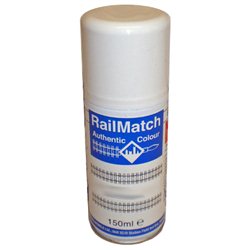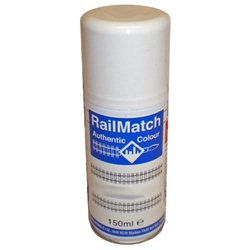The purpose of the saddle tank carried by some smaller steam locomotives is to provide a source of water for the...
No products
Product successfully added to your shopping cart
There are 0 items in your cart. There is 1 item in your cart.
Search Tips
When and how to apply clear coats to protect your scale models
When it comes to preserving the hard work you've put into building and painting your scale models, applying a clear coat is an essential step that shouldn't be overlooked. Clear coats not only enhance the finish of your model, making it look polished and professional, but they also provide a protective layer that shields your paintwork and decals from wear, UV damage, and handling. Knowing when and how to apply this final touch can make all the difference.
When to Apply a Clear Coat
The timing of applying a clear coat is key. You should always apply it after all your painting and decal work is complete but before any weathering effects. This allows the clear coat to seal in the paint and decals, ensuring they don't chip or peel over time. If you plan to do any weathering, such as washes or dry-brushing, it's best to apply a clear coat first. A gloss coat provides a smooth surface for washes to flow into panel lines without staining the rest of the model, while a matte coat after weathering locks everything in place.
In some cases, multiple coats may be necessary, depending on the look you're after. For example, if you're adding several layers of decals, you might want to apply a clear coat between layers to protect each decal from the one applied on top.
Choosing the Right Clear Coat
There are generally three types of clear coats used in scale modelling: gloss, satin, and matte. The type you choose depends largely on the final finish you want for your model. Gloss finishes are perfect if you're aiming for a shiny, factory-fresh look, while matte finishes are ideal for military models or any other models that require a less reflective, more realistic appearance. Satin offers a middle ground, giving you a slight sheen without being too glossy or too flat.
It's important to choose a clear coat compatible with your base paints. For example, if you've used acrylic paints, it's usually best to stick with an acrylic clear coat. Using a lacquer-based clear coat on acrylic paints, for instance, could lead to cracking or peeling. Always test on a small, inconspicuous area of your model to ensure compatibility before applying it across the entire surface.
How to Apply Clear Coats
Applying a clear coat evenly can be tricky, but with the right technique, it's easily achievable. Using an airbrush is highly recommended for the most consistent results. Thin the clear coat slightly if necessary and apply it in light, misty passes. Don't try to cover the model in one go—build up the layers gradually. Holding your airbrush too close or applying too thick a layer can result in runs or pooling, which may ruin your finish.
If you don't have an airbrush, spray cans can also be effective, but you'll need to be extra cautious about distance and pressure. Shake the can well, hold it at least 12 inches from the model, and make sure to spray in short bursts, keeping the can moving to avoid overspray. Regardless of your method, always work in a well-ventilated area and consider using a spray booth to minimise fumes.
Drying and Curing
Patience is key when it comes to clear coats. After applying the clear coat, allow your model to dry thoroughly in a dust-free environment. Drying times can vary depending on the type of clear coat and the conditions of your workspace, but it's best to give it at least 24 hours before handling it. For heavier-duty protection, some modellers recommend leaving it to cure for up to 48 hours, especially if you're using lacquer-based products.
Final Thoughts
Clear coats are an essential part of finishing your scale models, offering both protection and aesthetic enhancement. By understanding when and how to apply them properly, you'll ensure that your hard work is preserved and displayed in the best possible light. With the right choice of clear coat and careful application, your models will not only look more polished but will also be more resilient against the test of time.
Click here to receive the tips weekly in your mailbox. You can unsubscribe at any time.










